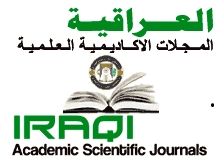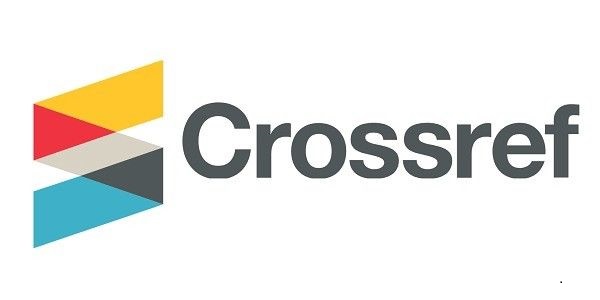The Electronic Properties and Reactivity of 4 (4-Substituted phenyl) -1,2,5- Selenadiazole Derivatives
DOI:
https://doi.org/10.56714/bjrs.50.2.22Keywords:
1,2,5-Selenadiazole, Proton Affinity, Reactivity Indices, DFT theoryAbstract
This study presents a theoretical investigation of 4-(4-substituted phenyl) -1,2,5- selenadiazole derivatives, focusing on the impact of para-substituents on their electronic properties and reactivity. Semi-empirical PM3 and density functional theory (DFT) methods (B3LYP/3-21G) were employed for molecular geometry optimization and electronic structure analysis. Key findings include significant substituent effects on HOMO-LUMO energy gaps, proton affinities, and reactivity indices. Electron-donating groups, particularly NMe2, notably enhanced molecular softness and reduced energy gaps, indicating increased chemical reactivity. Proton affinity calculations revealed systematic trends for electron-donating groups, while electron-withdrawing groups showed less consistent behavior. These insights provide a foundation for the potential application of these derivatives in catalysis, materials science, and drug development, highlighting the utility of computational methods in predicting structure-property relationships.
Downloads
References
A. Kremer , A. Fermi , N.Biot , J. Wouters , D. Bonifazi, "Supramolecular Wiring of Benzo‐1, 3‐chalcogenazoles through Programmed Chalcogen Bonding Interactions". Chemistry–A European Journal, 22(16): pp. 5665-567 ,2016. Doi: 10.1002/chem.201504328.
V. Nascimento, E. Alberto, D.W. Tondo, Michael, R. D.F. Nome, A. L. Braga"GPx-Like activity of selenides and selenoxides: Experimental evidence for the involvement of hydroxy perhydroxy selenane as the active species". Journal of the American Chemical Society, 134(1): pp. 138-141,2012. Doi:org/10.1021/ja209570y.
D. A. Stoyanovsky, J. Jiang , M. P. Murphy ,M. Epperly , X.Zhang , V. Kagan , H. Bayır"Design and synthesis of a mitochondria-targeted mimic of glutathione peroxidase, MitoEbselen-2, as a radiation mitigator". ACS Medicinal Chemistry Letters, 5(12): pp. 1304-1307, 2014.Doi:https://doi.org/10.1021/ml5003635.
G. S. M. Sundaram, D. Dhavale, J. L. Prior, P.Yan, J.Cirrito, N.P. Rath, R.Laforest, N.J. Cairns, J. Lee, P. T.Kotzbauer & V. Sharma , ,"Fluselenamyl: a novel benzoselenazole derivative for PET detection of amyloid plaques (Aβ) in Alzheimer’s disease" Scientific reports, 6(1): pp. 35636, 2016 Doi:10.1038/srep35636.
W.Wang , L. Li,S. Liu,C.Ma,S. Zhang "Determination of physiological thiols by electrochemical detection with piazselenole and its application in rat breast cancer cells 4T-1". Journal of the American Chemical Society, 2008. 130(33): pp. 10846-10847. Doi:.org/10.1021/ja802273p.
J. Yan , Y. Guo , Y. Wang, F. Mao, L.Huang, X. Li, "Design, synthesis, and biological evaluation of benzoselenazole-stilbene hybrids as multi-target-directed anti-cancer agents". European Journal of Medicinal Chemistry, 95: pp. 220-229, 2015. Doi: 10.1016/j.ejmech.2015.03.030.
A.R.Katritzky, C.A. Ramsden, E.F. Scriven, and R.J. Taylor ,C.A. Ramsden, E.F. Scriven, and R.J. Taylor, "Comprehensive heterocyclic chemistry III , Elsevier, 2008,pp. 1-13718. Doi: 10.1016/C2009-1-28335-3.
Y.Du, H. Li, B. Chen, H. Lai, and T.Che "Selenadiazole derivatives antagonize glucocorticoid-induced osteoblasts cells apoptosis by blocking ROS-mediated signaling, a new anti-osteoporosis strategy". RSC advances, 7(47): pp. 29656-29664, 2017. Doi:doi.org/10.1039/C7RA01306J.
H. Lai, X. Fu, C.Sang, L.Hou, P.Feng, X. Li, P.T.Chen," Selenadiazole Derivatives Inhibit Angiogenesis‐Mediated Human Breast Tumor Growth by Suppressing the VEGFR2‐Mediated ERK and AKT Signaling Pathways". Chemistry–An Asian Journal, 13(11): pp. 1447-1457, 2018. Doi:doi.org/10.1002/asia.201800110.
Y. Xu, H.Lai , S. Pan , L. Pan , T. Liu , Z. Yang , T. Chen , X. Zhu, "Selenium promotes immunogenic radiotherapy against cervical cancer metastasis through evoking P53 activation. Biomaterials", 305, p. 122452, 2024. Doi:Doi.org/10.1016/j.biomaterials.2023.122452.
A.A. Jadhav, and P.K. Khanna," Impact of microwave irradiation on cyclo-octeno-1, 2, 3-selenadiazole: formation of selenium nanoparticles and their polymorphs". Rsc Advances, 5(56): p. 44756-44763, 2015. Doi: http://dx.doi.org/10.1039/C5RA05701A.
P.Martins , J. Jesus , S. Santos , L.R.Raposo , C.R.Rodrigues , P.V.Baptista , A.R. Fernandes, Heterocyclic anticancer compounds: recent advances and the paradigm shift towards the use of nanomedicine’s tool box. Molecules, 2015. 20(9): p. 16852-16891. Doi:10.3390/molecules200916852.
Fuentealba, P. and C. Cárdenas, Density functional theory of chemical reactivity. 2014. Doi: 10.1039/9781782620112-00151.
M.Berkowitz, S.K. Ghosh, and R.G. Parr, r, On the concept of local hardness in chemistry. Journal of the American Chemical Society, 1985. 107(24): p. 6811-6814 Doi:https://doi.org/10.1021/ja00310a011.
R.G.Parr, and Y. Weitao,Density-Functional Theory of Atoms and Molecules. 1989: Oxford University Press.
R.G.Parr, L.v. Szentpály, and S. Liu, Parr, R.G., L.v. Szentpály, and S. Liu, Electrophilicity Index. Journal of the American Chemical Society, 1999. 121(9): p. 1922-1924. Doi: https://doi.org/10.1021/ja983494x.
P.K.Chattaraj, and B. Maiti, HSAB, principle applied to the time evolution of chemical reactions. Journal of the American Chemical Society, 2003. 125(9): p. 2705-2710. Doi: https://doi.org/10.1021/ja0276063.
R.G.Pearson Chemical hardness. Vol. 10. 1997: Wiley Online Library. Doi:10.1002/3527606173.
M. J. S. Dewar, and D.M. Storch, Proc. Natl. Acad. Sci. U.S.A., 1985. 82: p. 2225.
P.Pérez, , L.R. Domingo, M. Duque-Noreña, and E. Chamorro A condensed-to-atom nucleophilicity index. An application to the director effects on the electrophilic aromatic substitutions. Journal of Molecular Structure: THEOCHEM, 2009. 895(1-3): p. 86-91. Doi:https://doi.org/10.1016/j.theochem.2008.10.014.
HyperchemTM Release 7.52, Windows Molecular Modeling System, hypercube, scientific soft ware Inc Inc. . 2002.
J.J.Stewart, Optimization of parameters for semiempirical methods II. Applications. Journal of computational chemistry, 1989. 10(2): p. 221-264. Doi:https://doi.org/10.1002/jcc.540100209.
C.C.J.Roothaan, New developments in molecular orbital theory. Reviews of modern physics, 1951. 23(2): pp. 69. Doi: https://doi.org/10.1103/RevModPhys.23.69.
P.E. Gill, W.M., M.H. Wright, Practical Optimization, Academic Press, NewYork, 1981.
C.Lee, , W. Yang, and R.G. Parr,Development of the Colle-Salvetti correlation-energy formula into a functional of the electron density. Physical review B, 1988. 37(2): pp. 785. Doi: https://doi.org/10.1103/PhysRevB.37.785.
A.D.Becke Density‐functional thermochemistry. I. The effect of the exchange‐only gradient correction. The Journal of chemical physics, 1992. 96(3): pp. 2155-2160. Doi:https://doi.org/10.1063/1.462066.
T. Keith, and R. Bader, Calculation of magnetic response properties using atoms in molecules. Chemical physics letters, 1992. 194(1-2): p. 1-8. Doi: https://doi.org/10.1016/0009-2614(92)85733-Q.
L.R.Domingo, , M. Ríos-Gutiérrez, and P. Pérez,, Applications of the Conceptual Density Functional Theory Indices to Organic Chemistry Reactivity. Molecules, 2016. 21(6): p. 748. Doi: https://doi.org/10.3390/molecules21060748.
J.X. Fan, L. Ji, N.X. Zhang, P. Lin, G.Y. Qin,S.F. Zhang and A.M.Ren, Theoretical study of synergetic effect between halogenation and pyrazine substitutions on transport properties of silylethynylated pentacene. New Journal of Chemistry, 2019. 43(8): p. 3583-3600. Doi:https://doi.org/10.1039/C8NJ04714F.
D.R.Herrick, Connecting Pauling and Mulliken Electronegativities. Journal of Chemical Theory and Computation, 2005. 1(2): p. 255-260. Doi:https://doi.org/10.1021/ct049942a.
L.R.Domingo ”A Quarter Century of the Parr’s Electrophilicity ω Index” , Is Part Of Scientiae Radices, , p.157-186. . 1999-2024. Doi: 10.58332/scirad2024v3i3a02. 2024.

Downloads
Published
Issue
Section
License
Copyright (c) 2024 Basrah Researches Sciences

This work is licensed under a Creative Commons Attribution 4.0 International License.







